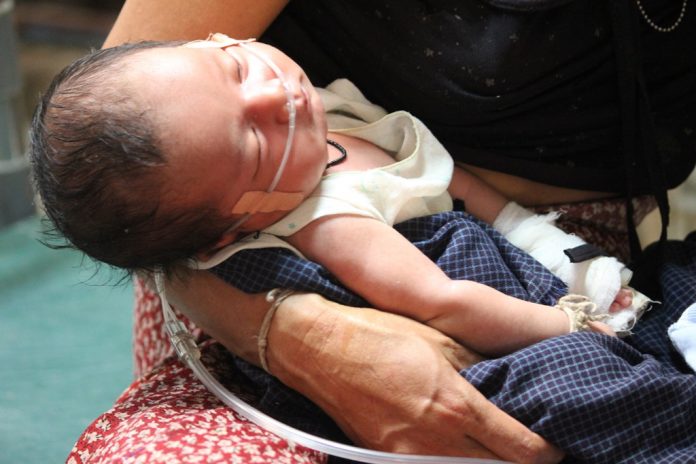Malaria is pervasive in Asia-Pacific, yet its invisibility means that people are not aware of the scale of the problem. Biomedical scientist Professor Kevin Baird discusses the disease, its impact in the region, and how we need to combat it.
Article by Hastings Forman
Malaria in Asia-Pacific
People do not commonly associate malaria as a pressing issue in Asia-Pacific, with public perception generally viewing the disease as an African problem. But according to the Eijkman-Oxford Clinical Research Unit (EOCRU):
• 2 billion people in Asia are at risk of endemic malaria
• Tens of millions are infected (perhaps hundreds of millions)
• Tens of thousands die as a result (perhaps, hundreds of thousands)
The uncertainty about the numbers arises from the invisibility of malaria – hidden away in poverty-stricken, isolated rural villages that survive without attention and aid. In such places, poorly developed public health services means that there is no thorough reporting of the illness and associated deaths, and so the extent of the disease is drastically understated.
“Malaria loves isolation and poverty,” says Professor Kevin Baird, Head of EOCRU in Jakarta, Indonesia. “In short, wherever that occurs in Asia-Pacific, we almost always find malaria.”
Malaria is an acute febrile illness:
• It is caused by an infection with any of the five species of protozoan (single-celled microorganisms), which are parasites in the genus Plasmodium
• The infection is transmitted via the bite of mosquitos – specifically by a species of mosquito in the genus Anopheles (of which there are 12 in Asia, compared to three in Africa)
• The parasites develop unnoticed in the liver for a week or so, then move into the blood stream and invade red blood cells, bursting them and causing malaria
• Malaria typically involves a fever, headache, muscle aches, nausea and vomiting
• There are drugs to prevent/cure it, but if it is not quickly diagnosed and properly treated, malaria can develop into complicated forms, which can lead to death

The Research Unit
The EOCRU is the University of Oxford’s clinical research unit at the Eijkman Institute for Molecular Biology in Jakarta, Indonesia. They conduct laboratory work, field research, and clinical trials, dealing with infectious diseases of public health importance in Asia-Pacific, and in Indonesia in particular. In doing so, they work closely with other laboratories, organisations and governments in Asia and around the world.
Their focus is in treating a species of Plasmodium that causes human malaria – Plasmodium vivax, which, according to the journal Science, accounts for 65 percent of malaria cases in Asia. Baird says that “this is a very difficult therapeutic problem because this species places dormant forms in the liver that cause repeated clinical attacks – called relapses – in the months following the infectious mosquito bite.” In order to prevent relapse, an infected person must take a special drug, the only one that can combat Plasmodium vivax – called primaquine.

The Challenges
There is a drawback to primaquine, however. It causes a threatening hemolytic anemic reaction in people who have a genetic abnormality called G6PD deficiency, which affects about eight percent of people in Asia-Pacific. What’s more, it is difficult to diagnose, particularly in patients reliant on under-resourced field clinics and hospitals. Baird notes that this technical problem leads to a dilemma: “Give primaquine and risk harm by G6PD deficiency, or withhold treatment and allow the parasite to do its harm.”

Nonetheless, Baird says that “there is no such thing as a risk-free drug; they all have side effects – some more unpleasant or threatening than others.” Given the severity of malaria and the need for treatment, Baird asserts that we should not discard drugs that may cause unpleasant effects: “The wiser course is knowing who is vulnerable to unpleasant or dangerous side effects and protecting them from a potentially harmful exposure to a drug.” In line with this, one of the aims of the EOCRU is to resolve the dilemma with better diagnostics for G6PD deficiency and safe treatments.
There is also the problem of people receiving treatment in the first place. Baird finds this to be the greatest challenge. Those in need are generally “poor and relatively isolated, and the care they need is urgent and relatively expensive (for them).” The economic burden, as well as the logistical issue of people getting to hospital, means that affected persons may try and resolve the illness with their own remedies, or they may wait to see if it passes. As a result, by the time they finally go for treatment, it could be too late. According to Baird, their inability to access the appropriate care, especially in rural impoverished areas, “explains the rural poor bearing the brunt of malaria morbidity and mortality in the Asia Pacific.”

What has to be done?
Baird admits that his opinions on combating malaria spark some controversy: “I earnestly believe that global malaria control strategy is overly reliant on objects for the control of malaria (diagnostics, drugs, mosquito nets) and neglectful of the development of local expertise in controlling malaria by modifying environments.”
He believes that there is too much attention on mitigating the harm caused by malaria as opposed to preventing it the first place.
One such preventive measure is the modification of malarious environments. For example, in Indonesia during the 1920s, scientists attending to a particular species of anopheles mosquito (Anopheles aconitus) which bred in rice paddies, discovered that at the periods when its larvae was most abundant, flushing the paddies could rid the area of the juvenile parasite. Following from this, “malaria transmission collapsed within ten years and those interventions became permanent agricultural practice, even to this day,” Baird says. Such was the success that the threat of this species is no more because its numbers are too low. Baird adds that “the expertise needed to implement such control measures is exceedingly rare today, in the Asia-Pacific and elsewhere. We need to get that expertise back in place to defeat malaria.”
As for what the public can do, Baird recommends being “aware of the problem and the people bearing it. Challenge your government, civil societies, and academics on what is being done about malaria in your nation. Understand that economic development for malarious areas is key to helping the people bearing the burden. Advocate awareness and actions that help these people.”

Professor Kevin Baird served as a malaria specialist for twenty-two years with the US Navy Medical Service Corp. He has been the head of the Eijkman-Oxford Clinical Research Unit since 2007.
Pearl Gan is a Singapore-based photographer working with the Eijkman-Oxford Clinical Research Unit, the Oxford University Clinical Research Unit in Vietnam, and the Wellcome Trust on this Malaria project, which is under the OUCRU Public Engagement Programme. Visit her website at www.asiamalariaimages.com.
Check out Asian Geographic’s Climate Change Issue 2/2017 for more science related articles, as well as Asian Geographic’s Health Issue, which is due to be published in September 2017.
All photographs copyright to Pearl Gan in association with Oxford Clinical Research Unit, Vietnam; Eijkman Oxford Clinical Research Unit, Jakarta, and The Wellcome Trust.











